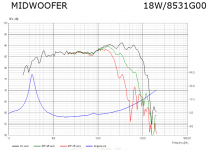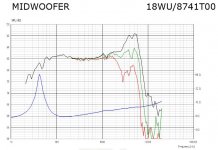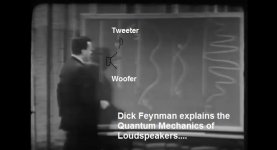Hi Everyone,
When choosing between the 6.5" ScanSpeak Illuminator and Revelator I went with the Revelator in large part due to the comments Zaph made about the Revelator having lower distortion than the Illuminator.
Even though I wasn't really focused on measuring the Revelator, I did measure distortion recently, while doing more extensive measurements on a tweeter. One thing that came up was some distortion pops up in the upper end of the Revelators I wasn't expecting here, between 500Hz and 1kHz (ignore DB values!):
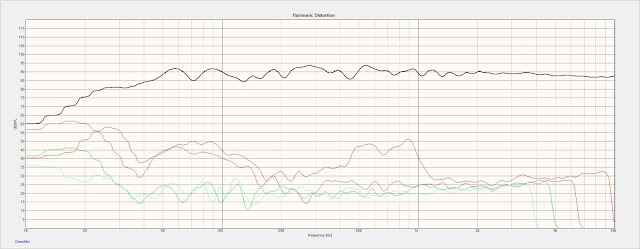
The same distortion shows up without a crossover by the way. Since Zaph clearly has a lot more experience I was tempted to discount my measurements until I saw the same distortion pop up in another measurement set. Thanks to a review by SoundStage Network and the National Research Council of Canada's measurements of a Wilson Sophia which includes the same driver:
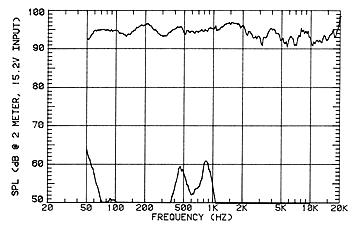
Addmitedly, Zaph mentions not to use his measurements without duplicating his methods, but his old charts are perfectly flat distortion wise. I'm wondering if the Revelator has changed, or if Zaph's measurements somehow missed this, or if maybe he accidentally reversed the data for the Illuminator and Revelator?
Has anyone had a chance to measured the ScanSpeak 6.5 Illuminator and/or Revelators for distortion recently?
Best,
Erik
When choosing between the 6.5" ScanSpeak Illuminator and Revelator I went with the Revelator in large part due to the comments Zaph made about the Revelator having lower distortion than the Illuminator.
Even though I wasn't really focused on measuring the Revelator, I did measure distortion recently, while doing more extensive measurements on a tweeter. One thing that came up was some distortion pops up in the upper end of the Revelators I wasn't expecting here, between 500Hz and 1kHz (ignore DB values!):

The same distortion shows up without a crossover by the way. Since Zaph clearly has a lot more experience I was tempted to discount my measurements until I saw the same distortion pop up in another measurement set. Thanks to a review by SoundStage Network and the National Research Council of Canada's measurements of a Wilson Sophia which includes the same driver:

Addmitedly, Zaph mentions not to use his measurements without duplicating his methods, but his old charts are perfectly flat distortion wise. I'm wondering if the Revelator has changed, or if Zaph's measurements somehow missed this, or if maybe he accidentally reversed the data for the Illuminator and Revelator?
Has anyone had a chance to measured the ScanSpeak 6.5 Illuminator and/or Revelators for distortion recently?
Best,
Erik
Last edited:
I'm not sure where the problem is? That 500-1000Hz issue is doubtless the rubber surround edge reflection. Quite characteristic of ALL woofers. You can even see it in the impedance. Broadly speaking you can have foam surrounds, lossy rubber and corrugated paper all with different nodes and antinodes at the edge. The edge resonance is where the response usually bends and dips. Changing the surround material can alter the lossiness.
And then the 4-5kHz peak cone characteristic of all 6" drivers, being a half-wavelength thing, which shows in phase and Frequency Response.
http://www.scan-speak.dk/datasheet/pdf/18w-8531g00.pdf
Klippel publish some great datasheets. It's a complex business balancing all the damping, mass and rigidity trade-offs. Even weird stuff like rocking modes crop up.
https://www.klippel.de/know-how/literature/papers.html
Back in the day, we used to do something called white noise testing, which measured the broad spectrum noise produced by a narrow channel signal. A bit like crosstalk really. Audio engineers are ignorant of this technique, which IMO would show exactly why soft-domes are poor. They essentially have a poor signal to noise ratio.
And then the 4-5kHz peak cone characteristic of all 6" drivers, being a half-wavelength thing, which shows in phase and Frequency Response.
http://www.scan-speak.dk/datasheet/pdf/18w-8531g00.pdf
Klippel publish some great datasheets. It's a complex business balancing all the damping, mass and rigidity trade-offs. Even weird stuff like rocking modes crop up.
https://www.klippel.de/know-how/literature/papers.html
Back in the day, we used to do something called white noise testing, which measured the broad spectrum noise produced by a narrow channel signal. A bit like crosstalk really. Audio engineers are ignorant of this technique, which IMO would show exactly why soft-domes are poor. They essentially have a poor signal to noise ratio.
Attachments
Last edited:
Thanks Steve!!
The only problem is that it's not in Zaph's measurements, and I was hoping to get a better handle on the $100 more expensive ScanSpeak Illuminator 18WU/8741T-00 in terms of distortion or power output. I mean, the Dane's are not stupid, I can't believe it's $100 just for having a prettier motor structure.
I think part of what brought this up too was that RAAL was commenting on it appearing to be unusually high.
Maybe this is in fact exactly how a Revelator should look like, and the Illuminator is worse, I just cant' see it. 🙂
Best,
Erik
The only problem is that it's not in Zaph's measurements, and I was hoping to get a better handle on the $100 more expensive ScanSpeak Illuminator 18WU/8741T-00 in terms of distortion or power output. I mean, the Dane's are not stupid, I can't believe it's $100 just for having a prettier motor structure.
I think part of what brought this up too was that RAAL was commenting on it appearing to be unusually high.
Maybe this is in fact exactly how a Revelator should look like, and the Illuminator is worse, I just cant' see it. 🙂
Best,
Erik
Such different animals! Here's the pricier Illuminator.
http://www.scan-speak.dk/datasheet/pdf/18wu-8741t00.pdf
Don't fancy that one at all. Even if it's made of unobtanium. 😕
My answer would be that sliced paper cones maybe have a downside. I wouldn't like you to come round and cut my cones with a stanley knife, then glue them back together! It's gotta be worse, hasn't it? Even if it produces some damping.
http://www.scan-speak.dk/datasheet/pdf/18wu-8741t00.pdf
Don't fancy that one at all. Even if it's made of unobtanium. 😕
My answer would be that sliced paper cones maybe have a downside. I wouldn't like you to come round and cut my cones with a stanley knife, then glue them back together! It's gotta be worse, hasn't it? Even if it produces some damping.
Attachments
Last edited:
Well, I tend to like multi-layer cones, such as the Focal W's or the Rohacell or carbon fiber composites I've listened to. The idea of two layers with different wave propagation characteristics being glued together to produce something that doesn't favor either's penchant for ringing makes sense to me, much like constrained-layer damping.
Plus, I really like my woofers. 🙂 I give them new inductors often to show I care. 🙂
ERik
Plus, I really like my woofers. 🙂 I give them new inductors often to show I care. 🙂
ERik
The only problem with mixing materials while hoping for the BEST of both worlds is you might get the WORST of both worlds.
I believe Marilyn Monroe said to Albert Einstein that their children might be brainy AND goodlooking. Albert saw the other possibility... 😀
TBH, I think these expensive low inductance speakers are very suited to wall mounting, because they filter easily and predictably with small bass coils.
That's how I'd use them. No bafflestep.
I believe Marilyn Monroe said to Albert Einstein that their children might be brainy AND goodlooking. Albert saw the other possibility... 😀
TBH, I think these expensive low inductance speakers are very suited to wall mounting, because they filter easily and predictably with small bass coils.
That's how I'd use them. No bafflestep.
The only problem with mixing materials while hoping for the BEST of both worlds is you might get the WORST of both worlds.
I believe Marilyn Monroe said to Albert Einstein that their children might be brainy AND goodlooking. Albert saw the other possibility... 😀
TBH, I think these expensive low inductance speakers are very suited to wall mounting, because they filter easily and predictably with small bass coils.
That's how I'd use them. No bafflestep.
Well, I did my baffle step with my low pass inductor, worked out pretty beautifully. Maybe that's why I don't get the fuss over BSC. 🙂
The one's I have sound great but largest "bookshelves" I've ever seen. 🙂
Best,
Erik
Well, ERik, I enjoy talking to you.
The fact is, that when you place a speaker close to the wall, bafflestep becomes irrelevant. My latest fun LR2 speaker with the unavoidable power dip at crossover, which I am working on. Maybe a filler midrange driver at right angles to correct the power response... IDK... 🙂
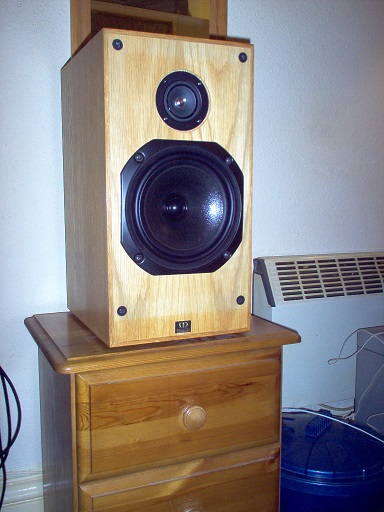
BTW, I'm not sure what's going in Joe Rasmussen's controversial thread at the moment, but the fun image I wanted to include to suggest that Quantum Mechanics is relevant is below. I love Physics Prof. Dick Feynman, inventor of QED. The best, most exact theory yet.
The fact is, that when you place a speaker close to the wall, bafflestep becomes irrelevant. My latest fun LR2 speaker with the unavoidable power dip at crossover, which I am working on. Maybe a filler midrange driver at right angles to correct the power response... IDK... 🙂

BTW, I'm not sure what's going in Joe Rasmussen's controversial thread at the moment, but the fun image I wanted to include to suggest that Quantum Mechanics is relevant is below. I love Physics Prof. Dick Feynman, inventor of QED. The best, most exact theory yet.
Attachments
Last edited:
...Plus, I really like my woofers. 🙂 I give them new inductors often to show I care. 🙂 .....
Like that one : )
Think have seen other good measured specs for that woofer over time online but can't remember where. Would it be too difficult next time you turn a bit on tone control and replace inductors than temporary place woofer on a bigger OB and measure it there, may tell if current enclosure is envolved.
BYRTT, were you thinking about this site?
http://medleysmusings.com/ss18wu4741/
Klippel tests of the Scan Speak Illuminator 18WU 7".
A monster of a driver, a very good one I'd say. 😱
BYRTT, there's some info on your Discovery series woofer there as well. I remembered these posts from my Car Audio days. Almost went with the Revelators, but price made me choose for something else, a couple of Herz ML1600's. Never regretted that decision but always wondered about that Revelator. But I'd have to say, that Illuminator looks real good in the test I linked.
http://medleysmusings.com/ss18wu4741/
Klippel tests of the Scan Speak Illuminator 18WU 7".
A monster of a driver, a very good one I'd say. 😱
BYRTT, there's some info on your Discovery series woofer there as well. I remembered these posts from my Car Audio days. Almost went with the Revelators, but price made me choose for something else, a couple of Herz ML1600's. Never regretted that decision but always wondered about that Revelator. But I'd have to say, that Illuminator looks real good in the test I linked.
Here is a sealed Illuminator 18WU/8741T00 LR24 actively crossed at 2.2kHz with a revelator D2904/7100-03 tweeter on a flat baffle about 300mm wide:
Measured at 1m 15 degrees off axis in a living room. Good crossover achieved using a phase shift network before the tweeter amp.
Oh I should add that the woofer amps are switched off there. They would have LR24 crossed at 150Hz if running. Also the speaker baffle is about 1m off the rear wall and there is 6dB of baffle step compensation implemented in the active crossover. No DSP. All analogue.
An externally hosted image should be here but it was not working when we last tested it.
Measured at 1m 15 degrees off axis in a living room. Good crossover achieved using a phase shift network before the tweeter amp.
Oh I should add that the woofer amps are switched off there. They would have LR24 crossed at 150Hz if running. Also the speaker baffle is about 1m off the rear wall and there is 6dB of baffle step compensation implemented in the active crossover. No DSP. All analogue.
Last edited:
Thanks links wesayso, cost aside Illuminator looks nice woofer.
eriksquires,
Here is Zaph ZRT build and guess XO and tweeter is within that measurement, setting it up verse yours he only have some little bit F5 sticking up in that area so maybe a chance your current enclosure is some responsible and can be improved on via trials and investigation.
eriksquires,
Here is Zaph ZRT build and guess XO and tweeter is within that measurement, setting it up verse yours he only have some little bit F5 sticking up in that area so maybe a chance your current enclosure is some responsible and can be improved on via trials and investigation.
Attachments
Last edited:
Thanks links wesayso, cost aside Illuminator looks nice woofer.
Indeed they are, for a little more background info on that klippel data look at the reasoning of B&O to choose it: B&O Tech: Why select one driver over another? (Part 1) earfluff and eyecandy
We all know by now the Beolab 90 is one of the favourite speakers of eriksquires 😛 (sorry)
Indeed they are, for a little more background info on that klippel data look at the reasoning of B&O to choose it: B&O Tech: Why select one driver over another? (Part 1) earfluff and eyecandy
We all know by now the Beolab 90 is one of the favourite speakers of eriksquires 😛 (sorry)
That's unfair. The BeoLab is growing on me. I just saw the price of caskets. It might be cheaper to buy a single Beolab 90 so they can bury me in it.
Erik
Here is a sealed Illuminator 18WU/8741T00 LR24 actively crossed at 2.2kHz with a revelator D2904/7100-03 tweeter on a flat baffle about 300mm wide:
An externally hosted image should be here but it was not working when we last tested it.
Measured at 1m 15 degrees off axis in a living room. Good crossover achieved using a phase shift network before the tweeter amp.
Oh I should add that the woofer amps are switched off there. They would have LR24 crossed at 150Hz if running. Also the speaker baffle is about 1m off the rear wall and there is 6dB of baffle step compensation implemented in the active crossover. No DSP. All analogue.
Those are really nice. Any chance you could do 90db at 2 feet distance?
Best,
Erik
Indeed they are, for a little more background info on that klippel data look at the reasoning of B&O to choose it: B&O Tech: Why select one driver over another? (Part 1) earfluff and eyecandy
We all know by now the Beolab 90 is one of the favourite speakers of eriksquires 😛 (sorry)
Is that the actual woofer used on Beo90?
Reports say that with 3 woofers it had the best bass in the house at CES.
My proceedure is to stick with the REW-recommended reference level of 75dB. I have tried higher SPLs before and the software reports clipping which I guess would be from the Focusrite 2i2 sound card. Mic is Earthworks M-23 with cal. file.
I have one that I took with both front speakers including their sealed 4 Morel woofers and 2 coffee table subs (with sealed Cerwin-Vega 189JE Cinema drivers). The mic is 4m from the front speakers (at seat) and it looks like this:
That super flat infrasonic (12Hz) bass extension is with the JRiver WMD in the signal loop from REW and there are 2 PEQ filters applied to tame a couple of room modes. Sorry for bad scaling on this one.
BTW the distortion figures displayed at the bottom are only for the frequency at the cursor position.
I have one that I took with both front speakers including their sealed 4 Morel woofers and 2 coffee table subs (with sealed Cerwin-Vega 189JE Cinema drivers). The mic is 4m from the front speakers (at seat) and it looks like this:
An externally hosted image should be here but it was not working when we last tested it.
That super flat infrasonic (12Hz) bass extension is with the JRiver WMD in the signal loop from REW and there are 2 PEQ filters applied to tame a couple of room modes. Sorry for bad scaling on this one.
BTW the distortion figures displayed at the bottom are only for the frequency at the cursor position.
Alrighty, thanks!
Maybe my problem is I need a few Illuminators in my next project. 🙂 Sadly all I can think of is a powered center.
Maybe my problem is I need a few Illuminators in my next project. 🙂 Sadly all I can think of is a powered center.
Here're some measurements of the Illuminator as a dipole:
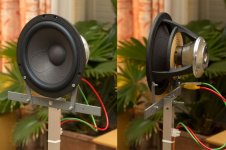
The response @50cm (red) compared to the response with some DSP applied (blue)
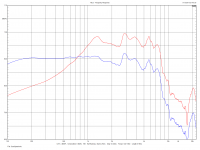
The response @50cm with some more DSP effort:
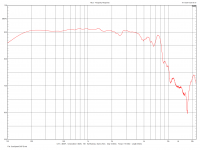
Harmonic distortion @50cm (95dBSPL):
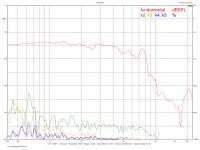
Remember that significant dipole correction has been applied.
Normalised directivity @50cm:
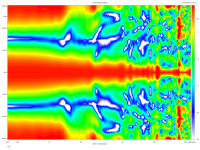
Directivity was measured from 0 to 180 degrees in 5 degree steps and then mirrored for a 360 degree view.
regards,
Gerrit

The response @50cm (red) compared to the response with some DSP applied (blue)

The response @50cm with some more DSP effort:

Harmonic distortion @50cm (95dBSPL):

Remember that significant dipole correction has been applied.
Normalised directivity @50cm:

Directivity was measured from 0 to 180 degrees in 5 degree steps and then mirrored for a 360 degree view.
regards,
Gerrit
OK so I'm not measuring now. These are old traces so sorry for relatively low SPL. This one was done on axis with a crappy (above 12kHz) Behringer mic at 2 ft from the Illuminator. Signal is via my active crossover (ESP P09s without baffle step comp. filter added at that stage) with tweeter and bass amps switched off, so it's showing the LR24 roll-offs (-6dB points are 150Hz and 2.2kHz), cursor at 1kHz. Power amp is ESP P101:
Speaker:
32mm MDF, tapered (triangular x-section) internal midrange enclosure stuffed with long fibre wool about 12 or 13 litres from memory (anyway whatever WinISD said to use for .707 max flat amplitude response).
An externally hosted image should be here but it was not working when we last tested it.
Speaker:
An externally hosted image should be here but it was not working when we last tested it.
32mm MDF, tapered (triangular x-section) internal midrange enclosure stuffed with long fibre wool about 12 or 13 litres from memory (anyway whatever WinISD said to use for .707 max flat amplitude response).
- Status
- Not open for further replies.
- Home
- Loudspeakers
- Multi-Way
- ScanSpeak 6.5" Revelator vs. Illuminator Distortion Revisit
